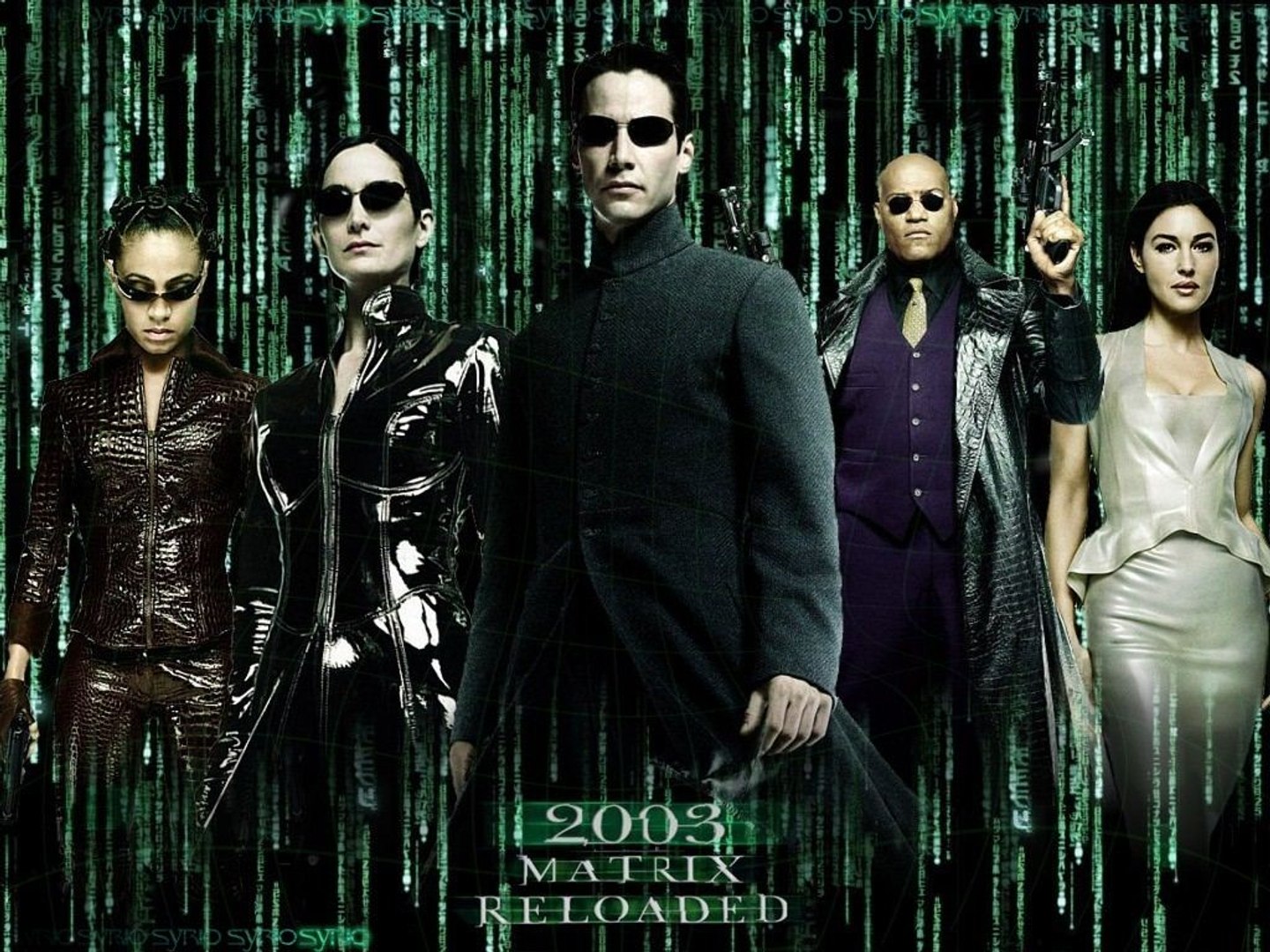🎬 The Matrix Reloaded (2003): A Mind-Bending Journey Through the Layers of Reality

Introduction: In 2003, the Wachowskis returned with The Matrix Reloaded, the highly anticipated sequel to the groundbreaking The Matrix (1999). Picking up where the first film left off, Reloaded expands on the philosophical questions of reality, free will, and control, all while pushing the limits of visual effects and action choreography. This installment dives deeper into the war between humans and machines, taking audiences on a mind-bending journey through layers of deception and truth. With its complex narrative, visually stunning fight sequences, and philosophical musings, The Matrix Reloaded cements its place as a bold continuation of the saga.
Plot Overview: The Matrix Reloaded follows Neo (Keanu Reeves), who has fully embraced his role as “The One,” tasked with saving humanity from the tyranny of the machines. Alongside Morpheus (Laurence Fishburne) and Trinity (Carrie-Anne Moss), Neo embarks on a mission to find the Keymaker, a mysterious figure who holds the key—literally and figuratively—to defeating the machines. As Zion, the last human city, prepares for an impending attack by the Sentinels, Neo must navigate the increasingly complex Matrix to confront the truth about his destiny.

The film takes Neo through encounters with new characters, including the enigmatic Oracle (Gloria Foster), the self-serving Merovingian (Lambert Wilson), and the relentless Agent Smith (Hugo Weaving), who returns with new powers and a personal vendetta. With time running out, Neo must unlock the deeper truths of the Matrix and discover whether his actions are truly his own or part of a preordained cycle.
Performance and Character Dynamics: Keanu Reeves once again delivers a stoic yet captivating performance as Neo, perfectly embodying the character’s internal struggle between free will and determinism. Laurence Fishburne’s portrayal of Morpheus continues to be that of a true believer, unwavering in his faith in Neo, while Carrie-Anne Moss adds emotional depth to Trinity’s character as she grapples with her love for Neo and the dangers they face.

Hugo Weaving’s return as Agent Smith is both chilling and compelling. With newfound autonomy from the system, Smith evolves into a more complex antagonist, bent on breaking free of his own chains within the Matrix. The introduction of new characters like the Merovingian and the Keymaker adds layers to the intrigue, expanding the Matrix’s lore while heightening the tension.
Themes and Analysis: The Matrix Reloaded delves into heavy philosophical themes, most notably free will versus determinism. The film questions whether Neo, as “The One,” truly has control over his fate, or if he is simply following a path predetermined by the Architect, the creator of the Matrix. The Oracle’s cryptic guidance and the Architect’s cold logic challenge Neo’s—and the audience’s—understanding of choice and consequence.
The film also explores the concept of cyclical systems, not just within the Matrix but within human societies. Neo’s journey through Reloaded forces him to confront the possibility that his rebellion is just another layer of control, designed by the machines to perpetuate the system. This raises existential questions about whether true freedom can ever be attained or if it is merely an illusion within a greater system of power.

Visuals and Action: Visually, The Matrix Reloaded ups the ante with some of the most iconic action sequences in cinematic history. The freeway chase is a masterclass in action filmmaking, blending martial arts, gunplay, and stunning visual effects to create one of the most memorable scenes of the 2000s. Neo’s fight against hundreds of Agent Smith clones (the “Burly Brawl”) showcases the Wachowskis’ signature blend of choreography and CGI, even if the heavy reliance on early 2000s effects dates the sequence somewhat.
The film’s visual language remains steeped in its signature green-tinged aesthetic, representing the virtual reality of the Matrix. The contrast between the bleak, industrial real world and the slick, stylized Matrix continues to reinforce the dichotomy between freedom and control, illusion and reality.
Film Details:
- Title: The Matrix Reloaded
- Release Date: May 15, 2003
- Director: Lana and Lilly Wachowski
- Starring: Keanu Reeves, Laurence Fishburne, Carrie-Anne Moss, Hugo Weaving
- Genre: Action, Sci-Fi
- Runtime: 2h 18m
- Rating: R
Final Thoughts: The Matrix Reloaded challenges both the characters and the audience to reconsider their understanding of reality, choice, and freedom. While some viewers may find the film’s philosophical musings to be overly complex or convoluted, the Wachowskis deserve credit for pushing the boundaries of sci-fi storytelling. The action sequences remain top-tier, and while the narrative becomes increasingly intricate, Reloaded sets the stage for the explosive finale in The Matrix Revolutions.
For fans of the original, this sequel expands the mythology in fascinating ways, offering more than just mindless action but instead diving deep into the nature of existence and control. Whether you’re watching for the philosophy, the action, or the groundbreaking visuals, The Matrix Reloaded delivers on multiple levels.
SUGGESTED VIDEO FOR YOU:
Movie Review: The Great War of the Norse Gods || Thor 2011
Movie Review: The Return of the Bald Savior, Humanity’s Last Hope || Black Adam











